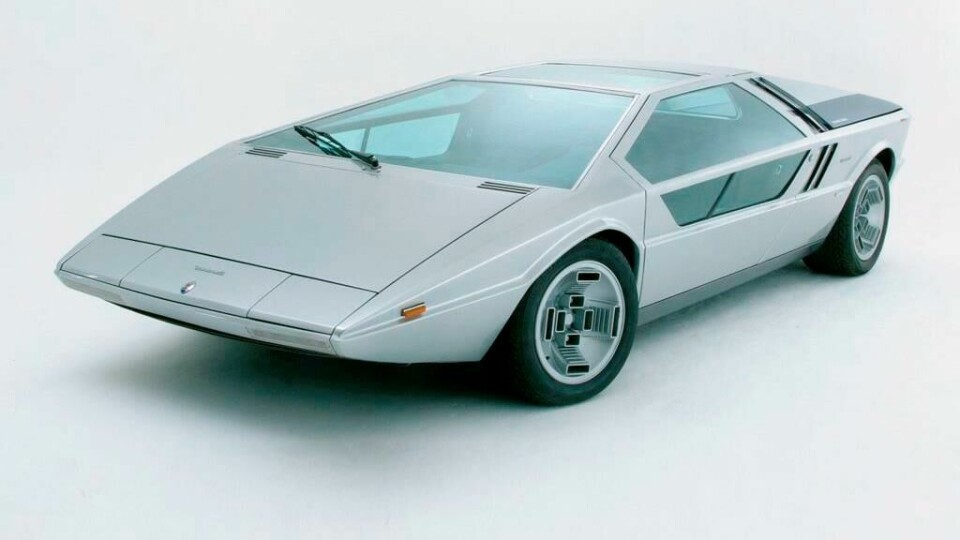
Concept Car of the Week: Maserati Boomerang (1972)
In 1972, Giorgetto Giugiaro created one of the most futuristic wedge-shaped concepts of all – the Maserati Boomerang
Designed by Giorgetto Giugiaro, the Maserati Boomerang debuted as a static epowood model with a complete interior at the Turin Motor Show in 1972, before being shown in its full, running glory five months later at the 1973 Geneva Motor Show.

Based on the running gear of the Maserati Bora, the design of which was also the work of Giugiaro, the Boomerang was an exercise in taking the wedge form to the extreme. Most notably, the car had an incredibly acute windscreen angle of just 13 degrees, a full two degrees less than Giugiaro’s Bizzarrini Manta from 1968.
And while the designer had issues from windscreen manufacturers with regards to the visibility that would be available from such a shallow screen, work on the Boomerang project would help ensure that the 1975 Lotus Esprit could be endowed with an 18 degree screen – still incredibly shallow for a production model.

Aside from its angle, the screen’s trapezoidal shape also help establish the angular design themes that give the Boomerang is distinctive looks, informing the shape of the side glass, rear screen and those huge rear buttresses.
Giugiaro also looked to previous designs to inspire the Boomerang, with the horizontal intakes on the hood developed from the Alfa Romeo Iguana, the front end and beltline shape taken from the VW Porsche Tapiro. However, the most obvious inspiration is the 1971 Alfa Romeo Caimano that introduces the trapezoidal buttresses and the oversized maker’s logo on the car’s hood.

Despite the outside influences, there are still plenty of features that make the Boomerang unique, including the superb wheels, which the Italdesign website states are Giugiaro’s best. The interior also elevates the car to another level, with an oversized steering column allowing just the rim of the steering wheel to be seen. Within the wheel was a circular gauge pack, with the speedometer and rev counter in the upper half, switches for the lamps, wipers and indicators in the middle, and gauges for the battery, water, oil and fuel below.

Despite its futuristic appearance, the steering wheel was designed with increasingly awareness of safety in mind, with the steering column held in place with a chain to stop it moving backward in the event of a crash, with the large centre of the steering wheel was also created with space for an airbag in mind.

After making the rounds of the European motor show circuit, the concept was sold to a cabaret owner in Benidorm, Spain. The car was then bought in 1980, restored and made road-legal, with the proviso that the yellow bulbs were installed for the turn indicators. The car’s Bora-derived powertrain includes a 310hp 4.7-litre V8, capable of powering the car to a theoretical top speed of over 300kph.
After its lengthy restoration, the car was shown at the 1990 Bagatelle Concours in Paris, where Giorgetto Giugiaro hand-signed the rear panel. It was sold at auction in 2002, making over $640,000, and will be sold at auction again later this year.
What else happened in 1972?
In this year, the end of modern architecture was declared. The South Tower of the World Trade Center was opened to tenants, and the North Tower was completed. The Lockheed L-1011 TriStar entered service, the Arpanet – a precursor to the internet – was shown in public for the first time, and the Taser was patented in the US. Evan Williams, who would become the chairman and CEO of Twitter was born, as was actress Cameron Diaz, and the Godfather was the highest-grossing film of the year. On a culinary note, this was also the year when Turkish-born German Kadir Nurman invented the döner kebab.




